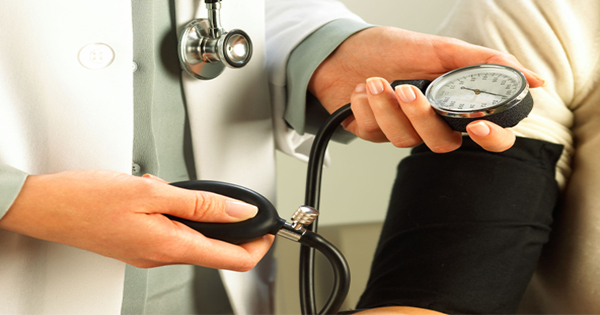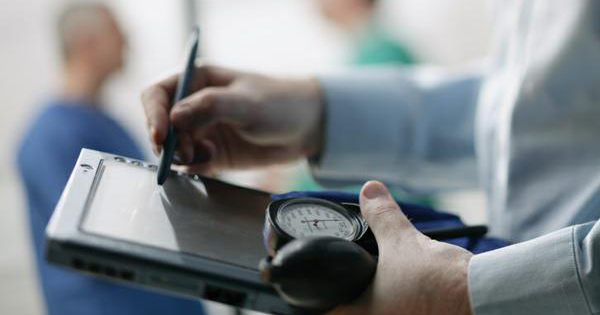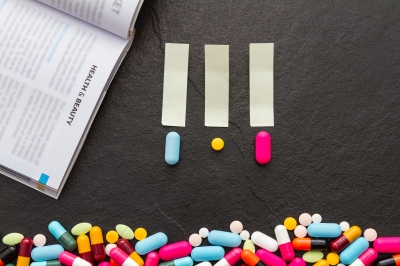What is a Normal Blood Pressure by Age?
 High blood pressure, or hypertension, does not always present with symptoms. You may have high blood pressure and feel perfectly fine. That is why it is important to regularly monitor your blood pressure to ensure you are within normal levels.
High blood pressure, or hypertension, does not always present with symptoms. You may have high blood pressure and feel perfectly fine. That is why it is important to regularly monitor your blood pressure to ensure you are within normal levels.
Your blood pressure reading includes a top number and bottom number. The top number is your systolic reading. This is the pressure blood exerts against artery walls when the heart contracts or beats. The bottom number is the diastolic reading. This measures the force against your artery walls when the heart is relaxed or between beats.
Your blood pressure will fluctuate throughout the day depending on changes in posture, stress, sleep, and exercise. Regardless of fluctuations, your blood pressure on average should remain less than 120/80 mm Hg.
Here are blood pressure categories as defined by the American Heart Association.
Normal blood pressure: <120 / 80 mm Hg
Prehypertension – 120-139 / 80 -89 mm Hg
Stage 1 High Blood Pressure – 140-159 / 90-99 mm Hg
Stage 2 High Blood Pressure – >160 / 100 mm Hg
Hypertensive Crisis – >180 / 110 mm Hg (seek emergency care)
Prehypertension increases your risk for developing high blood pressure. If you have prehypertension, this is an ideal time to assess your diet and lifestyle choices and implement changes to lower levels. Continue reading
10 Heart Health Facts and Myths

Much of what you think you know about high blood pressure, or hypertension, may be based on outdated information. “You may think, for example, that being diagnosed with prehypertension isn’t a big deal, especially if you’re in your 20s or 30s. You may feel fine. But we’re now learning that even slightly elevated blood pressure over a prolonged time can have serious consequences.
Felicia Stoler, DCN says science is evolving so quickly that it’s sometimes difficult to keep up with what we should and shouldn’t be doing to manage our health. Research on blood pressure is no exception. Here are the ten common myths Stoler hears most frequently.
Myth #1: Blood pressure in the 120/80 range is ideal.
Fact: “Just as over the years, health experts have dropped the acceptable limits with respect to cholesterol and blood sugar, the same is now happening with blood pressure. Experts are re-thinking what’s healthy. Too many people who have blood pressure in the 120/80 range are developing heart disease. What’s more: we’re discovering that young people are at greater risk for developing heart disease later in life than we once thought.
“The CARDIA study, conducted by researchers at multiple locations including Johns Hopkins University, Northwestern University, University of Minnesota and the National Heart, Lung and Blood Institute, followed nearly 2,500 healthy men and women from early adulthood (ages 18 to 30), for 25 years. The results revealed that those whose blood pressure was in the prehypertension range – between 120/80 and 139/89 – while they were still under 30, were more likely to have signs of heart disease when they reached middle age. Specifically, they were at higher risk of developing problems with their heart’s left ventricle.
“Results of the SPRINT study were presented at the American Heart Association annual meeting. In that study, about 9,300 participants were seen regularly for four to eight years by blood pressure management experts. Researchers determined that maintaining blood pressure below the commonly recommended systolic target of 120 significantly reduced rates of cardiovascular disease and lowered the risk of death among adults age 50 and older diagnosed with high blood pressure. As a result of this study, the American Heart Association now suggests that blood pressure of 120/80 is the new lower limit for hypertension.”
Myth #2: You’ll notice symptoms if you have elevated blood pressure.
Fact: “That’s the challenge with high blood pressure as well as high cholesterol. There may not be any noticeable warning signs, or they may seem so insignificant that you just ignore them. That’s why high blood pressure is often called the silent killer. For example, some people with high blood pressure may get headaches but attribute them to stress. Left unmanaged, high blood pressure can affect your overall health. That’s why even eye doctors and dentists will check your blood pressure during your appointments.”
Continue reading
How to Monitor Blood Pressure at Home
 High blood pressure is diagnosed when blood pressure is consistently equal to or greater than 140 mm Hg/90 mm Hg.
High blood pressure is diagnosed when blood pressure is consistently equal to or greater than 140 mm Hg/90 mm Hg.
According to the Centers for Disease Control and Prevention about 70 million adults are diagnosed with high blood pressure. This is equal to about 1 out of every 3 adults in this United States.
Blood pressure diagnosis is often based on clinic blood pressure readings. This is problematic due to a variety of factors resulting in inaccurate readings. Some factors that impact blood pressure accuracy include adequate rest period prior to blood pressure measurement, cuff size appropriate for arm circumference, and cuff deflation rate. Additional challenges to the clinic settings is whether or not the reading reflects the normal blood pressure level when outside the clinic setting. Many suffer from what is termed “white coat hypertension” where blood pressure rises in response to the medical environment.
Monitoring blood pressure at home is one step you can take to supplement clinic monitoring for a more complete representation of typical blood pressure levels.
A Joint Scientific Statement from the American Heart Association (AHA), American Society of Hypertension (ASH), and Preventive Cardiovascular Nurses Association (PCNA) encourages increased regular use of self-monitoring blood pressure for the majority of patients with hypertension to increase patients’ engagement and ability to manage their blood pressure, as well as enable the care team to provide appropriate and timely treatment.
Take these steps to monitor blood pressure at home:
Continue reading
Types of Blood Pressure Medications
 Many high blood pressure medications are available. Most options fall within these eight categories.
Many high blood pressure medications are available. Most options fall within these eight categories.
Diuretics
You may also hear diuretics called “water pills”. They increase the elimination of sodium and water by the kidneys. This decreases blood vessel fluid volume, which reduces pressure against artery walls, thereby lowering blood pressure.
The three classes of diuretic drugs include thiazide, loop, and potassium-sparing.
Examples of diuretics include:
- Chlorothiazide (Diuril)
- Hydrochlorothiazide (Microzide)
- Furosemide (Lasix)
- Bumetanide
- Amiloride
- Eplerenone (Inspra)
Beta-blockers
This drug category may also be called beta-adrenergic blocking agents. Beta-blockers inhibit the effects of the hormone epinephrine (aka adrenaline), resulting in a slower, less forceful heartbeat. Beta-blockers can also promote vasodilation (i.e. widening of the blood vessels). These two actions results in reduced blood pressure.
Examples of beta-blockers include:
- Acebutol (Sectral)
- Atenolol (Tenormin)
- Metoprolol (Lopressor, Toprol-XL)
How to Reduce Stress When You Don’t Have Time for Activity
 When you are stressed your body releases stress hormones to prepare the body for “fight of flight”. This hormone release causes heart rate to increase and blood vessels to constrict. The combination leads to elevated blood pressure. With short term stress, this is a temporary rise in blood pressure that resolves itself once the stressful situation is resolved.
When you are stressed your body releases stress hormones to prepare the body for “fight of flight”. This hormone release causes heart rate to increase and blood vessels to constrict. The combination leads to elevated blood pressure. With short term stress, this is a temporary rise in blood pressure that resolves itself once the stressful situation is resolved.
But what about when you live with chronic stress?
There is no direct scientific link between chronic stress and high blood pressure. However, stress is connected to many behaviors directly tied to high blood pressure and heart disease, such as consuming alcohol, lack of sleep, and overeating.
Physical activity for stress relief… but what if you don’t have time?
Being physically active is a proven method you can use to reduce stress levels. Activity triggers the brain to release “feel-good” chemicals to ease stress. Exercising and being active are also proven ways to lower blood pressure.
However, time and location may not always be conducive to employ activity to lower stress levels. Here are ten alternate techniques for reducing stress.
- Eat a healthy diet
- Avoid alcohol
Include foods rich in vitamins and minerals to counteract stress, such as fresh vegetables, fresh fruits, fish, and yogurt.
This potential short term “fix” to alleviate stress can quickly turn into a long term problem.
Continue reading




